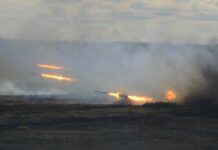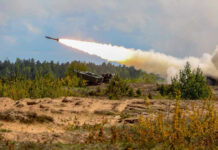
Survival in the wheel well of a commercial jet is nearly impossible—yet one desperate individual tried, leaving behind a mystery that challenges our faith in airport security and human resilience.
Story Snapshot
- Maintenance crews at Charlotte Douglas International Airport found a stowaway dead in the landing gear of an American Airlines flight from Europe.
- The deceased remains unidentified; authorities are investigating the origin and circumstances of the incident.
- The event spotlights the extreme risks and security gaps of international air travel.
- Aviation experts warn that wheel-well stowaway attempts are almost always fatal, raising urgent questions about global airport security.
Fatal Gamble in the Skies: Wheel-Well Stowaway Incidents
Maintenance teams at Charlotte Douglas International Airport discovered an unidentified body in the landing gear of an American Airlines jet arriving from Europe. The Charlotte-Mecklenburg Police Department responded quickly, confirming the death at the scene. The Mecklenburg County Medical Examiner’s Office now faces the grim task of determining the individual’s identity and cause of death. American Airlines and airport authorities are cooperating fully as the investigation unfolds, underscoring the seriousness and rarity of such tragedies.
Survival in an aircraft wheel well is statistically improbable. The Federal Aviation Administration reports that over 77% of wheel-well stowaways die en route, succumbing to extreme cold, lack of oxygen, and physical trauma as planes cruise at altitudes where temperatures plummet and oxygen becomes scarce. Notable survivors, such as the Kabul-Delhi teenager, are exceptions that prove the rule. Most attempts end in fatality, and the Charlotte case is a stark reminder of the consequences of desperation meeting unforgiving engineering.
Aviation Security Under Scrutiny: How Did This Happen?
The unanswered question is how an individual bypassed airport security at a major European hub to access the aircraft’s landing gear undetected. The incident exposes vulnerabilities in ground surveillance and screening procedures, especially for international flights. Charlotte Douglas International Airport, as one of America’s busiest hubs, is now thrust into the spotlight. Security experts and investigators are dissecting every step—from the point of origin to the point of discovery—to understand how such a breach could occur in the modern era of aviation security.
Law enforcement leads the investigation, with the CMPD and Medical Examiner’s Office coordinating efforts to identify the deceased and reconstruct the sequence of events. American Airlines and the airport are navigating operational continuity and public relations, balancing transparency with regulatory requirements. The relationship between these stakeholders is defined by investigative authority and operational responsibility, as each plays a crucial role in managing the aftermath and preventing future incidents.
Ripple Effects: Industry, Security, and Migration Discourse
Short-term implications include heightened scrutiny of airport security and ground operations, particularly for international arrivals. Airline and airport staff confront psychological impacts and operational reviews, while law enforcement and medical personnel allocate resources to the ongoing investigation. The aviation industry faces reputational challenges and potential regulatory changes as policymakers and the public demand answers and action.
The tragedy may prompt reviews and tightening of security measures at both departure and arrival airports. Broader social discourse will likely focus on migration pressures and the desperation that drives individuals to risk their lives in such perilous ways. Political forces could push for stronger international cooperation on airport security protocols, affecting not only airlines and airports but also the global movement of people. The incident is a flashpoint for debates about security, migration, and the intersection of human vulnerability with technological infrastructure.
Expert Analysis: Survival Impossible, Security Essential
Industry experts like aviation analyst John Nance describe wheel-well stowaway survival as “almost unheard of,” with risks including frostbite, limb loss, and brain death from oxygen deprivation at altitude. The FAA’s data is unequivocal: most die in transit, and those who survive suffer severe, lifelong consequences. The Charlotte incident has drawn consistent, fact-based reporting from major news outlets and aviation analysts, all emphasizing the need for improved ground surveillance and international security cooperation.
While experts debate the root causes—security gaps versus migration desperation—the consensus is clear: wheel-well stowaway attempts are a lethal gamble, and the aviation industry must respond with vigilance, innovation, and compassion. The mystery of the Charlotte stowaway remains unsolved, but the implications reverberate through every checkpoint, cockpit, and control tower in the world.
Sources:
AInvest: American Airlines flight lands in Charlotte, stowaway found dead in landing gear
CNN: Stowaway found dead in landing gear of American Airlines plane in Charlotte
Report.az: Stowaway found dead inside landing gear of an American Airlines flight
KNKX: Stowaway found dead in landing gear of American Airlines flight in Charlotte
KGOU: Stowaway found dead in landing gear of American Airlines flight in Charlotte
WGCU: Stowaway found dead in landing gear of American Airlines flight in Charlotte

































